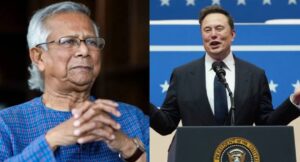International pay-TV broadcaster Canal Plus has extended its partnership with global electronics giant Samsung as it looks to increase its global subscriber base.
The expansion will see Canal Plus’ streaming service pre-installed on the home screens of newly sold Samsung TVs from 2024 and 2025 across Europe, Asia, and in French Overseas Territories where Canal Plus is distributed.
The move comes ahead of the launch of the Canal Plus app in more than 25 French-speaking African territories.
Philippe Schwerer, Canal Plus’ executive vice-president of Industrial Partnerships and New Business, said: “This partnership makes it easier than ever to access all Canal Plus content and bundles on Samsung devices in over 40 countries and paves the way for an expanded collaboration between our two groups.”
Canal Plus has increased its international foothold significantly in recent years, having raised its shareholding in the African media group Multichoice to over 26%, while it acquired a 70% majority stake in SPI International, a US-based media company operating 42 TV channels and multiple digital products, in March 2022.
In 2023, meanwhile, it became a “significant” minority shareholder in Viu, the over-the-top (OTT) streaming platform owned by Hong Kong-based telecommunications group PCCW, to enhance its presence in the Southeast Asia region.
The broadcaster has also been expanding its operations in Central Europe recently and has snapped up rights to English soccer’s Premier League in the Czech Republic and Slovakia.
In addition, it has purchased pay-TV operator M7 in Austria, Belgium, the Netherlands, the Czech Republic, Slovakia, Hungary, and Romania.
Canal Plus is a major holder of sports rights in the countries it operates in, namely having exclusive coverage of English soccer’s top-tier Premier League until the 2027-28 season across multiple countries including France, Switzerland (French language only), the Czech Republic, Slovakia, Poland and Vietnam.
It also holds the rights to French soccer’s top-tier Ligue 1 in Sub-Saharan Africa through the 2028-29 season and to US-based mixed martial arts series the Professional Fighters League in the same territory.
Meanwhile, its offering in the Netherlands includes ESPN, the rights holder of the country’s domestic soccer top-flight Eredivisie, France’s Top 14 rugby union competition, and padel’s Premier Padel Tour. Sportcal









